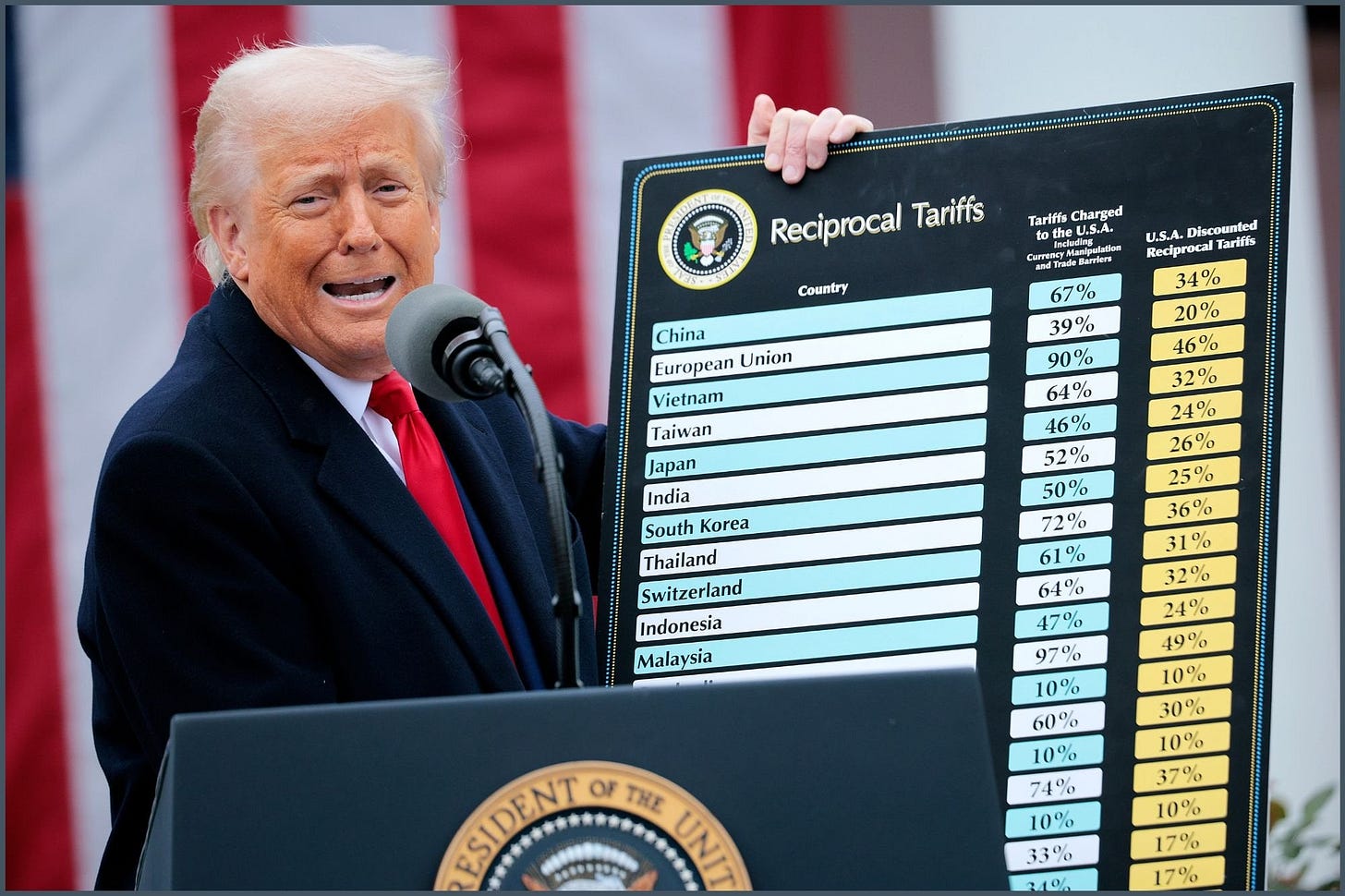Did ChatGPT Secretly Write Trump’s Tariff Plan? The Internet Thinks So—and the Markets Just Reacted
Did Trump’s new tariff policy come from ChatGPT? Discover how an AI-generated formula rocked global markets and what it signals for the future of policy-making.
The U.S. just redefined global trade policy—and it might’ve used ChatGPT to do it.
At a recent "Liberation Day" event, Donald Trump unveiled a sweeping tariff plan that sent global markets reeling. Almost immediately, AI experts and economists noticed something uncanny: the numbers matched nearly word-for-word what large language models like ChatGPT and Gemini would generate if asked to "design a tariff policy."
In this article, we’ll break down how Trump’s latest tariff plan mirrors AI-generated outputs, why economists are sounding the alarm, the impact across major industries, and what strategic leaders should be doing right now to stay ahead.
The Big Picture – What Happened?
📊 President Trump proposed a tariff scheme with a flat 10% base rate and escalated charges for nations with larger trade deficits with the U.S.
The fallout was swift:
📉 S&P 500 dropped 4%
📉 Nasdaq plummeted over 5%
🌍 World leaders and allies scrambled to interpret and respond
Markets crashed, not just from the policy—but from the realization it may have been AI-assisted.
The Formula Controversy
🎯 The alarm bell rang from political commentator Steven Bonnell (aka Destiny), who tested ChatGPT with a prompt eerily similar to what the administration seems to have used.
ChatGPT’s formula?
"Divide the trade deficit with a country by the value of imports from that country. Apply 10% minimum."
This was the exact logic used in Trump’s chart. Coincidence? Unlikely.
Reem’s Take: If your policy sounds like an AI prompt, it probably is one. That’s a governance risk, not a tech triumph.
AI Echo Chamber – Gemini, Claude, Grok, ChatGPT All Agree
🧠 When economists tested the same prompt across multiple AI platforms—Claude, Grok, Gemini—they all returned similar formulas.
Economist Rohit Krishnan called it:
“The first large-scale application of AI technology to geopolitics.”
That might sound revolutionary—until you consider the fragility of basing national policy on public AI models.
The Administration’s Defense and Denial
The White House eventually released its official formula. But to critics, it looked suspiciously like a rephrased AI output—right down to the structure and methodology.
Public trust didn’t improve. Neither did Wall Street’s mood.
Reem’s Take: Even if AI wasn’t used, the resemblance raises questions about competence, transparency, and accountability.
Why Experts Are Sounding the Alarm
🧨 James Surowiecki called the method “extraordinary nonsense.”
Here’s why:
It oversimplifies complex trade dynamics
It assumes static, linear relationships in global economics
It creates volatility in diplomatic and commercial relations
The biggest concern? It introduces the risk of AI-generated hallucinations bleeding into national decisions.
The Sector Fallout
🎯 Industries are already bracing:
Technology: Disrupted sourcing for semiconductors and rare-earth components
Supply Chains: Unpredictable customs and tariff shifts across regions
Global Markets: Rising protectionism as retaliation brews from Europe to Asia
Reem’s Take: AI isn’t the enemy—bad usage is. When deployed without guardrails, it becomes an accelerant for chaos.
The AI Governance Gap
🕳️ Here’s what’s missing:
No transparency around AI use in policymaking
No ethical oversight for executive decisions involving LLMs
No federal standards for vetting AI-generated outputs in public policy
Legal, financial, and defense sectors could be next unless proactive frameworks are implemented.
Strategic Moves for Leaders
🧭 What should you be doing right now?
Audit Dependencies: Is AI being used in your organization’s strategic decisions?
Scenario Planning: Prep for fallout when AI-driven policies hit your market
Policy Vetting: Establish internal AI ethics boards, especially for public-facing decisions
Reem’s Take: Your AI advantage is only as strong as your governance. Use this moment to lead responsibly.
Ethical & Legal Implications
⚖️ The big questions no one wants to answer:
Who owns responsibility if an AI output drives failed policy?
Will future administrations rely on AI for real-time geopolitical strategy?
Where are the international AI standards?
Until these are addressed, we’re navigating a minefield with our eyes half-closed.
Looking Ahead: AI in the Halls of Power
The next decade may look like this:
AI evolves from background advisor to strategic co-pilot
Real-time policy generation becomes technically feasible
Public trust depends on traceability and explainability
Reem’s Take: The question isn’t “Will AI be in government?” It’s “Will we be ready when it is?”
Balanced Perspective
Let’s keep it real:
Keep reading with a 7-day free trial
Subscribe to Reem Tech Pro to keep reading this post and get 7 days of free access to the full post archives.




